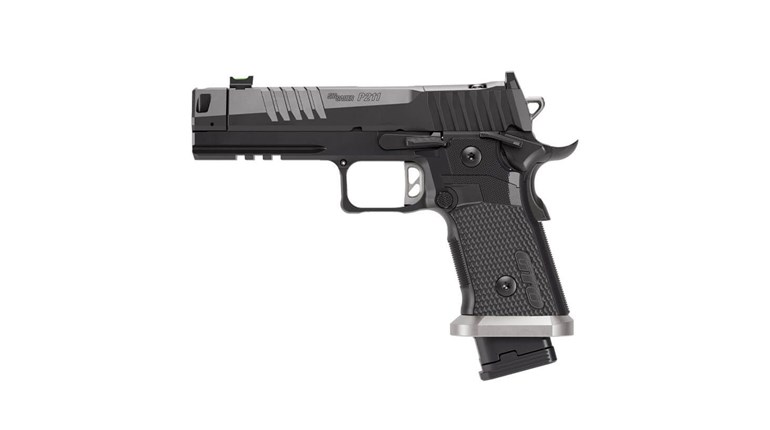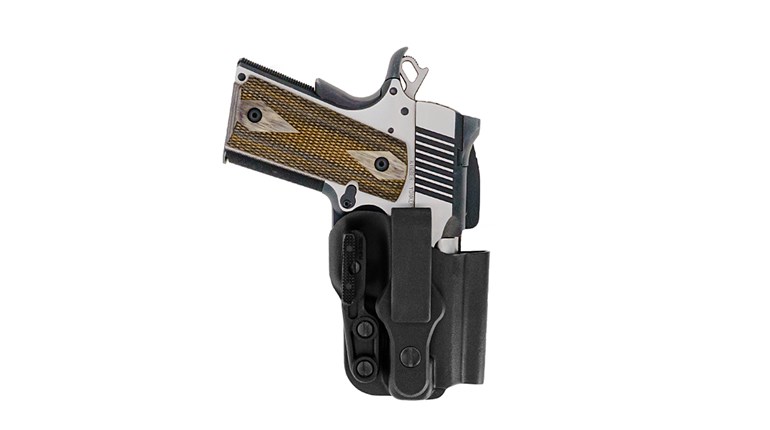
As I write this, I am just back from the 1911 Centennial school at Gunsite Academy. We spent a whole week celebrating the 100th anniversary of the 1911 pistol (March 29, 1911), learning about its history, maintenance and combat application. One of the most interesting lectures was on pistol maintenance by Charley Pulit from Novak's Sights. Since I've spent more than 40 years with the 1911, I thought I would share some maintenance tips that have kept my guns running with little, or no, trouble.
If you are new to the 1911 pistol, you should first learn the proper way to field-strip the handgun. If your 1911 is new you can simply refer to the instruction manual that ships with it, but if not, there are several good books on the subject, not the least of which is "The M1911 Complete Owner's Guide," by Walt Kuleck. The next step is to learn how to properly clean the pistol.
In addition to standard solvents, wire brushes, patches and cleaning rods, there are a couple of other handy items that make spiffing up your 1911 a snap. The first of these is a toothbrush and the second is cotton swabs, the kind found in every drugstore.
Both items, dipped in solvent, will be a great help cleaning out the various nooks and crannies in the 1911's frame and slide.
Obviously, a defensive handgun must be kept clean. After all, you may have to bet your life on it. So you might as well get into the habit of cleaning your 1911 after every shooting session. Yes, I know, the 1911 was designed to function in all kinds of nasty, dirty situations. Clean it anyway for greater peace of mind.
In addition to regular cleaning, after every 1,000 rounds, I like to remove the firing-pin stop and take out the firing pin and extractor. They need a good cleaning, too. And, while you're at it, run a cotton swab down in the firing pin and ejector holes in the slide. You'd be amazed how much gunk and powder residue build up in those locations.
Where lubrication of the 1911 is concerned, shooters often fall into two categories; either they don't lubricate at all or they lubricate way too much. Neither is good for the gun. It needs a light coat of lubricating oil—one specifically designed for firearms. A couple of drops of lubrication on the various parts is generally adequate, giving special attention to the barrel locking lugs and the slide and frame rails. "A couple of drops" are the operative words here. When finished, there should be a very light coat of oil on the parts you can grasp.
Personally, I don't care to use any sort of grease for this operation. Too often, grease will solidify and cause malfunctions. Just a light coat of oil is all that is needed. It is also not a good idea to use WD-40 on your 1911. Now, I have nothing against WD-40, it's just not designed for guns. It is a penetrating oil known to deactivate primers, in addition to solidifying in your handgun. While I always keep some WD-40 around the house, I keep it away from my firearms.
For years, I have replaced the 1911's recoil spring nearly every 3,000 rounds. However, Pulit recommends changing it every 1,000 rounds. Taping a new recoil spring to the top of the 1,000-round ammo case you bought enables you to make the change accordingly. His point: The cost of the recoil spring is nothing compared to the price you just paid for that case of ammo. The argument makes sense to me and I plan to give it serious thought in the future.
Since most malfunctions in the 1911 can be traced to faulty magazines, they deserve our serious attention. It's a good idea to keep two sets of magazines, one for practice and another for serious carry. Reserve your practice set for range work and only shoot your carry set occasionally to make sure they work properly.
The biggest mistake regarding magazines is when they become defective and start to cause malfunctions. For some reason, most shooters will just put them back in their shooting box and not think about it until they cause another malfunction at the next shooting session. I have a much better solution: Throw them away and buy new ones. It really doesn't matter why they are malfunctioning, they aren't going to get better. I can assure you the folks at Brownells will be happy to assist you in that regard.
There are cases where 1911 magazines have remained loaded for years and performed flawlessly when they are finally used. Springs in single-stack magazines don't seem inclined to weaken as they do in the double-stack variety. Regardless, just to humor myself, I generally switch my carry magazines around about every month or so, allowing one to remain empty. While this might do me more good than the magazine, I have experienced very few magazine failures over the years.
Also, it's a good idea to do the same with your defensive ammunition. About every couple of months, shoot up your carry ammo and load fresh fodder. The act of chambering a round in your pistol may seat bullets too far in the case, or lubricants and other substances may affect the primer and powder. As a result, it's best to replace it on a regular basis, taking the time to make a thorough visual inspection of each new cartridge as you load it into the magazine. I have found factory ammo (two different brands) that had primers seated back-ward in the primer pocket. I've also seen factory ammunition with the case mouth damaged from the bullet-seating process. It's rare, but it does happen.
Finally, I keep an oily gun rag on the nightstand by my bed. When I take the pistol off in the evening, I take a moment to wipe off its exterior. This has kept my guns looking good, but it also gives me a daily opportunity to make a visual inspection of the handgun. It's a good habit to get into.
All in all, the 1911 handgun is a grand old fighting pistol, known for its ruggedness and reliability. History has proven if you take care of it, it will take care of you. Hopefully, these simple maintenance tips will help you hold up your end of the deal.






































